Streamers & pulling flies
{{start}}
It’s a subtle distinction between what I consider streamers and pulling flies and what I consider ‘loch style flies’ . The main difference for me is that whilst each of the flies below work well in a team of flies they also fish well by them selves. My favorite woolly bugger flies and some of nymphs such as my damsel nymph and my mudeye are the same. The flies in my ‘Loch’ selection are different. Sure you could fish them on their own but by in large I regard each of my ‘Loch’ flies as fishing best when fished in a team of flies. There are heaps of flies to choose from. These are the ones I carry in my Lake fly box along with my Lock flies.
{{end}}
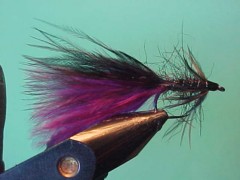
{{+1}}Tassi bugger – Chatto’s version{{-1}}
{{start}}
I was introduced to this variation in the lead up to the 2002 Tasmanian One Fly which by chance I won. Whilst I was not comfortable enough to use this fly in that contest I have used it many times since to great effect.{{end}}
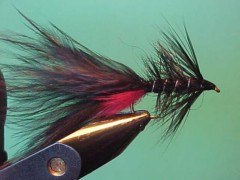
{{+1}}Mark II woolly bugger{{-1}}
{{start}}
The MK 2 woolly buggers evolved from standard black and olive woolly buggers as a fly that would imitate an American frog that had bright red between its hind legs. The red is a great trigger point and I find the MK2 as a great generalist search pattern. In southern climes the hot spot is tied in any of the 'roe' colours and is widely accepted as one of the best early season search pattens.{{end}}
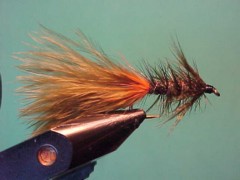
{{+1}}Skirted woolly bugger – Chatto’s original{{-1}}
{{start}}
Whilst not tied to imitate any natural food source it's a very buggy looking fly with heaps of trigger points including the marabou tail, the soft body and front hackles as well a the skit itself. In particular I like to incorporate blood red or orange skirts which are suggestive in the case of a red skirt as bleeding from around the base of the tail or the claws depending on what the fly is taken as or in the case of an orange skirt as a fish roe.{{end}}

{{+1}}Mini woolly buggers{{-1}}
{{start}}
In recent years I have found that other than the traditional woolly bugger of around 50 mm in length there is also a demand for very small woolly buggers. In fact I would go as far as to say that in most of the fisheries that I haunt 'mini woolly buggers' of from 25 mm to 30 mm in length are often more effective than the larger versions on which they are based. I have narrowed down the mini woolly bugger selection that I carry to just brown, black, black with a red thread head and olive versions.{{end}}
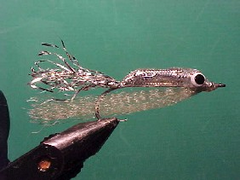
{{+1}}Superhair rattler{{-1}}
{{start}}
This is a good alternative to the zonker rattler particularly for estuary species. It lends itself to fishing on a fast sink line and a jerky active retrieve with plenty of stops. It's also a good idea to count the fly down so that you can identify what depth they are holding at.{{end}}
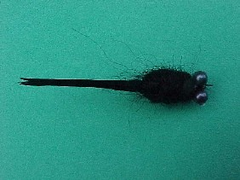
{{+1}}Tadpole{{-1}}
{{start}}
Fish the tadpole fly either on the drop or the lift in shallow water around detritus matter. This action mimics the action of a tadpole coming to the surface to breath and then returning to its cover and is a prime time for trout to strike.{{end}}
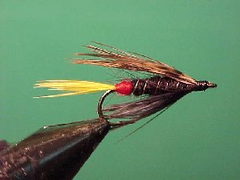
{{+1}}Connemara variant{{-1}}
{{start}}
It was the summer of 2000 that I first became involved on English style Loch Style fly fishing and slowly I accumulated an arsenal of techniques and flies. I really enjoy tying flies and so as I have seen various patterns I have tied them and tried them. Most have been discarded and just a few have won a place in my Loch Style fly box - this is one of them.{{end}}
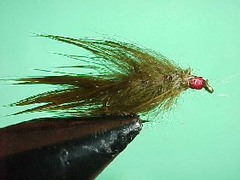
{{+1}}Fur fly{{-1}}
{{start}}
Conceptually these are a very simple fly but when tied with the right materials and in the right density they are a great all round fly. You can use them as a stream fly or for polaroiding or prospecting but in my opinion they are at their best when used as an attractor fly in a team of loch style flies. Choice of fur is important. If you can get died kangaroo that's OK but my preference is rabbit fur off a zonker strip.{{end}}
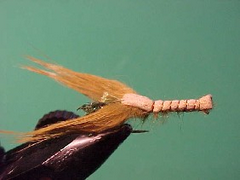
{{+1}}Sinking yabby / crayfish{{-1}}
{{start}}
Over the years I have experimented with various Yabby patterns and whilst some have looked great unfortunately they have all been “dogs” to fish or more correctly to cast. Generally rather than using them I have reverted to fishing a weighted woolly bugger instead. Well all that has now changed and I now have a Yabby in my fly box, in both a floating and sinking version, that I have confidence in.{{end}}
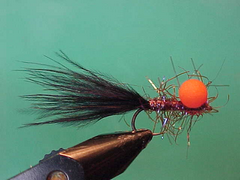
{{+1}}Straggle fritz booby{{-1}}
{{start}}
One of the best search flies in slow moving or still deeper water using a sinking line. If fishing from a fixed position cast it out, let the line sink to the desired depth, and then retrieve the line using a constant stripping motion, a pumping retrieve or a combination of both.{{end}}













